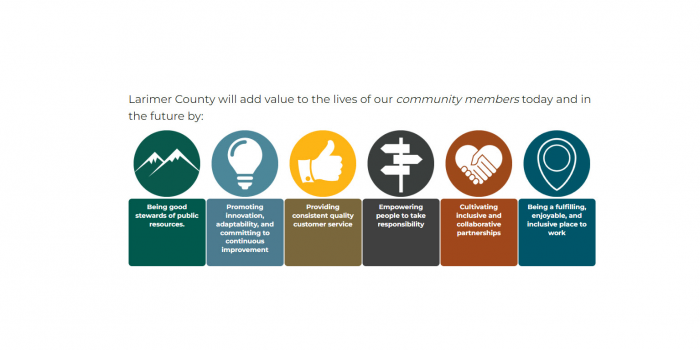
Marc Plooster is an Accountant for the County of Ottawa, MI. Prior to joining Ottawa County, he worked for the City of Grand Rapids, MI in multiple roles including as a John H. Logie Fellow.
There is something important to consider when selecting a job, key to remaining happy in a job, and part of many decisions to stay or leave a job. I am, of course, talking about workplace culture. Workplace culture differs among economic sectors, industries, geographic locations, organizations, and departments. Culture can be just as different between a for-profit corporation in Delaware and a nonprofit organization Utah as it is different between a family run sole-proprietorship in Memphis and a start-up partnership San Francisco.
As a society, we recognize and often value differences in workplace culture. News organizations publish regularly list ranking places, companies, and jobs by a multitude of data such as opportunity and diversity, benefits and job satisfaction, and job growth and wage. Based on experience, interest, and what we read, we chose and sometimes later re-chose degrees and careers we want to pursue. While none of these decisions are binding, they represent our experiences, hopes, and dreams at a particular moment.
Government as in industry or the public sector as a whole is unique in that it is ubiquitous. No matter where you are, there are numerous layers of government. The culture of the public sector is also unique but not necessarily consistent. The transportation department in Seattle, Washington and Grand Rapids, Michigan are quite different given geographic location, history, and size. One common culture point I hope is found at all public organizations, the public service aspect of a government career is important irrespective of differences. Government employees are tasked with making sure people are safe; have access to public infrastructure such as utilities, roads, and parks; and provide public health and mental health services. Faced with many internal and external challenges, it is a culture of doing “good” or what is “right” that attracts and holds many to government.


When asked to interview for a job opening, seize the opportunity to investigate the workplace culture. If you have worked for a few different organizations, consider the little differences that represent larger department or organization cultu
MARC PLOOSTER
Individual governments also have wide varying culture. Some governments have very siloed organization with unique departments. Other governments have top-down structured departments sharing an identifiable culture. Many governments have put into place LEAN practices that have origins in auto manufacturing. Governments may have a culture of identifying employee traits and characteristics to better understand the working relationships among team members. Organizations may implement government-wide decision-making practices.
Within individual departments, unique culture develops. I expect this is not unique to government but is common across all sectors and industries. For instance, some departments have frequent outings where employees can mingle over lunch. Offices with open door policies that encourage frequent communication and collaboration are common. When birthdays roll around, some offices have the birthday celebratee bring in a treat, while other offices have the last birthday celebratee bring in treats. While these things might sound inconsequential, a lot can be learned about the culture managers have created or are perpetuating.
When asked to interview for a job opening, seize the opportunity to investigate the workplace culture. If you have worked for a few different organizations, consider the little differences that represent larger department or organization culture. Often organization culture will be at topic covered as the interviewers talk about practices and initiatives in place. In addition, do not be afraid to ask what may seem like odd questions in addition to the countless suggested questions recommended by multiple interview self-helps. Pay attention the whole answer given to strange and unexpected questions you ask. Spoken words and body language together and separate offer a lot of information.
When given the opportunity to have a second interview, consider asking for a walk through of the organization and your department. While these are common in orientation, a lot of the culture of an organization can be viewed from the structure of physical space. The existence of walled offices, cubicles, skylights, and collaboration spaces provide hints on the practices of a department. Pay attention to how employees are interacting with their environment. Most importantly, consider this; after you have left one employer and accepted a new position, it is sometimes too late to discover potential culture clash. Seize the opportunity before making final decisions.
Want new articles before they get published? Subscribe to our Awesome Newsletter.

CAREER ADVICE
Advice from top Career specialists

GOV TALK
Articles about the Public Sector

TRENDS
Public Sector Trends



